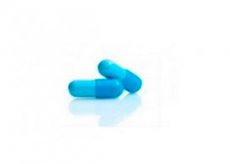Medical expert of the article
New publications
Preparations
Cefenap-M
Last reviewed: 03.07.2025

All iLive content is medically reviewed or fact checked to ensure as much factual accuracy as possible.
We have strict sourcing guidelines and only link to reputable media sites, academic research institutions and, whenever possible, medically peer reviewed studies. Note that the numbers in parentheses ([1], [2], etc.) are clickable links to these studies.
If you feel that any of our content is inaccurate, out-of-date, or otherwise questionable, please select it and press Ctrl + Enter.

Cefenap-M is an NSAID and has antirheumatic properties.
Indications Cefenapa-M
It is used to treat the following disorders:
- a feverish condition that occurs during the development of a disease of infectious and inflammatory origin, as well as in inflammatory pathologies in the large intestine (such as sphincteritis with proctosigmoiditis, cracks in the rectum and hemorrhoids );
- as an antipyretic, analgesic and anti-inflammatory drug in situations where oral drugs with a similar therapeutic effect cause irritation in the gastrointestinal tract after their administration, which makes their use impossible.
In addition, the medication can be used for headaches or toothaches, pain caused by injuries or surgeries, as well as neuralgia.
 [ 1 ]
[ 1 ]
Release form
It is released in the form of rectal suppositories.
Pharmacodynamics
A complex drug containing 2 NSAID substances - salicylamide with naproxen. They have an analgesic, anti-inflammatory and antipyretic effect. Also, caffeine contained in the drug potentiates the above properties.
Pharmacokinetics
The half-life of naproxen is 12-15 hours, so the drug can be taken twice a day. Naproxen accumulates more actively in synovial tissues, compared to other derivatives of propionic acid. As a result, a high medicinal concentration is created at the site of inflammation. The therapeutic activity of the substance develops quickly, maintaining high rates for up to 12 hours.
Dosing and administration
It is necessary to insert suppositories rectally, deeply. The procedure is carried out after voluntary bowel movement or a cleansing enema. It is necessary to insert 1 suppository, 1-3 times per day. After the procedure, the patient must remain in a horizontal position for another 30-40 minutes.
The duration of the therapy is a maximum of 6 days.
Use Cefenapa-M during pregnancy
Cefenap-M should be prescribed to lactating or pregnant women with extreme caution. It is recommended to stop breastfeeding during therapy.
Contraindications
Main contraindications:
- the presence of hypersensitivity to medicinal substances;
- elevated blood pressure values in a pronounced form;
- diseases affecting the functioning of the cardiovascular system and having an organic nature;
- insomnia or severe excitability;
- glaucoma;
- history of bronchospasms caused by NSAID use;
- problems with the liver or kidneys that are severe;
- elderly people.
Side effects Cefenapa-M
The use of suppositories may provoke the following side effects:
- signs of allergy;
- thrombocytopenia or granulocytopenia, as well as aplastic anemia;
- feeling of weakness or drowsiness, dizziness, tinnitus and decreased speed of psychomotor reflexes;
- hearing disorders;
- disorders of renal or hepatic functional activity;
- pain and itching developing in the rectum area.
Sometimes one can expect the development of tachycardia or agitation, as well as an increase in blood pressure.
 [ 2 ]
[ 2 ]
Overdose
Intoxication with the drug may cause tachycardia, dizziness, bronchial spasms, and pain or itching in the rectum. In addition, heart failure or renal or hepatic dysfunction may develop, and blood pressure may increase.
If such symptoms appear, the drug should be discontinued and symptomatic measures should be taken, including lowering blood pressure and maintaining cardiac function.
If itching or discomfort occurs in the rectal area, the patient should be given sunflower oil through an enema.
Interactions with other drugs
It is prohibited to combine antihypertensive, diuretic and hypoglycemic medications, as well as anticoagulants and lithium medications with Cefenap-M.
The drug weakens the antihypertensive effect of ACE inhibitors and β-blockers, and also increases the effect of sulfonylurea derivatives and anticoagulants.
Potentiates the therapeutic properties of antihypertensive drugs and anticonvulsants.
Combination with SG may lead to an increase in their plasma values, exacerbation of heart failure, and weakening of glomerular filtration.
Combined use with diuretic drugs increases the likelihood of developing nephrotoxic effects of NSAIDs, which are part of the drug.
Combination with lithium agents reduces the volume of lithium excreted, which may increase fluid loss and reduce the tolerability of these drugs.
Probenecid (a uricosuric agent) inhibits the excretion of naproxen and increases its levels in blood plasma.
Storage conditions
Cefenap-M should be kept in a dark and dry place, out of the reach of small children. The temperature level should be within 8-15°C.
Shelf life
Cefenap-M is permitted to be used within 24 months from the date of release of the drug.
Application for children
The medication is prescribed to adolescents who have reached the age of 16.
Analogues
The drug's analogues are Movex and Afenak, as well as Rebon and Zelid Plus.
Attention!
To simplify the perception of information, this instruction for use of the drug "Cefenap-M" translated and presented in a special form on the basis of the official instructions for medical use of the drug. Before use read the annotation that came directly to medicines.
Description provided for informational purposes and is not a guide to self-healing. The need for this drug, the purpose of the treatment regimen, methods and dose of the drug is determined solely by the attending physician. Self-medication is dangerous for your health.

